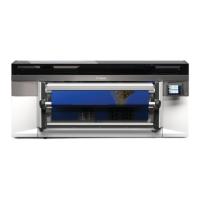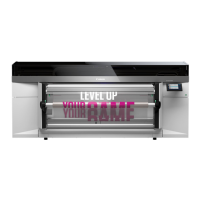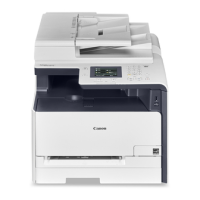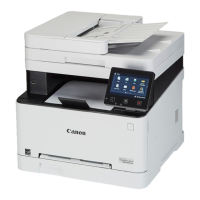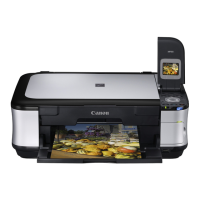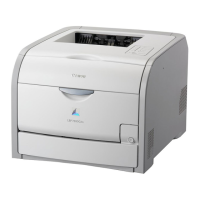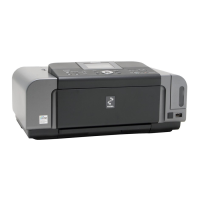Do you have a question about the Canon Colorado 1630 and is the answer not in the manual?
Provides essential safety precautions and guidelines for operating the Colorado 1630 printer.
Details the various documentation resources available for the printer, including user manuals and online help.
Describes the software licenses that provide extra options for the Colorado 1630 printer.
Covers important safety and environmental user information, including warnings and disclaimers.
Details the safety system of the printer, focusing on the winder and its emergency stopping device.
Identifies and describes the components accessible from the media output side of the printer.
Identifies and describes the components accessible from the media input side of the printer.
Details the components within the media drawer, including roll loading station and media roll positions.
Provides detailed specifications for media handling, including width, weight, diameter, and thickness.
Guides on managing media profiles within the RIP software, covering ONYX and Caldera.
Explains how to adjust various media settings in the RIP to optimize print quality and media handling.
Step-by-step instructions for loading a media roll into the first position of the printer's media drawer.
Provides instructions on performing media calibration to improve print quality and media transportation.
Details the different winding options available for media output, depending on media type and RIP settings.
Explains how to configure the printer to cut media automatically after each copy.
Outlines the general workflow for printing jobs, involving RIP, operator panel, printing, and mobile app.
Describes the procedure for submitting and printing a job via the RIP application.
Details how to manage submitted jobs on the operator panel, including pause, resume, stop, and move up.
Explains the operator panel indicators, including colors and symbols, for system status and required actions.
Guides on using the mobile app to monitor the printer remotely, check events, and view printer status.
Provides guidelines and procedures for regular printhead and system maintenance to ensure optimal condition.
Instructions for initiating automatic maintenance procedures to address quality issues.
Procedures for performing manual maintenance tasks to resolve quality issues or after errors.
Detailed steps for cleaning the printer's maintenance station, wiper, and clean wall.
Procedure for cleaning the matrix plate, anti-reflective strips, and mirror edges to prevent print quality issues.
Guides on how to easily refill ink bottles, including checking ink levels and bottle status.
Step-by-step instructions for replacing the maintenance tray in the first design of the printer.
Procedure for replacing the printer's wiper to resolve quality issues like smudging.
Instructions on how to replace emission or external exhaust filters without service assistance.
Guidance on vacuuming the chiller and checking its fluid level as part of periodic maintenance.
Instructions for refilling the chiller with demineralized water when the fluid level is low.
Procedure for cleaning the mirrors and glass plate in the mirror funnel to maintain printer condition.
Steps for cleaning the ink unit, especially after replacing bottles or during periodic maintenance.
Outlines the general workflow to solve quality problems and improve print output.
Guides on printing a chart to check printhead quality and identify potential issues.
Instructions on optimizing printhead performance by performing printhead calibration.
Procedure to align printhead carriage registration for blurred or fuzzy images.
Details on changing network configuration settings, including hostname, IP address, and proxy settings.
Enables and configures remote assistance for service technicians to access the system remotely.
Instructions for logging in as a System administrator on the operator panel or settings editor.
Enables time synchronization with a certified time server for automatic date and time settings.
Guides on changing the System administrator password for security reasons.
Overview of the printer's security features, including OS patches, settings protection, and ports.
Procedure to enable secure communication via HTTPS by installing a valid identity certificate.
Steps to configure the PRISMAsync Remote Control app for monitoring the printer remotely.
Advises making a backup of confidential data and exporting it to a file for safekeeping.
Provides essential tips and tricks for optimal use and handling of the Colorado 1630 printer.
Guides on downloading job records and log files via the settings editor for job analysis.
Details on automatic and manual software updates for the printer's operating system and PRISMAsync.
Procedure for receiving and installing licenses through the On Remote Service (ORS) system.
Instructions on how to turn the printer on and off using the button on the media output side.
Steps for safely removing media from the paper path in case of a jam or carriage crash.
Provides solutions for specific print quality issues, starting with general workflows and then detailed problem descriptions.
Addresses zebra banding issues in print quality, detailing causes and actions for gloss and matte modes.
Solutions for print issues like graininess, mottle, and non-uniform ink drops due to alignment or coalescence.
Troubleshooting steps for media transport issues like bulging, wrinkling, waves, curling, drifting, and slipping.
Contains regulatory compliance information for various countries and regions, including RF, FCC, and WEEE directives.
| Print Technology | UVgel |
|---|---|
| Print Resolution | 1200 x 1200 dpi |
| Ink Colors | Cyan, Magenta, Yellow, Black |
| Maximum Print Width | 64 inches (1626 mm) |
| Media Handling | Roll-to-Roll |
| Ink Type | UVgel ink |
| Number of Colors | 4 (CMYK) |
| Maximum Media Thickness | 0.8 mm |
| Connectivity | Ethernet |
| Maximum Media Weight | 50 kg (110 lbs) |
| Take-up Reel | Yes |
| Operating System Compatibility | Windows |
